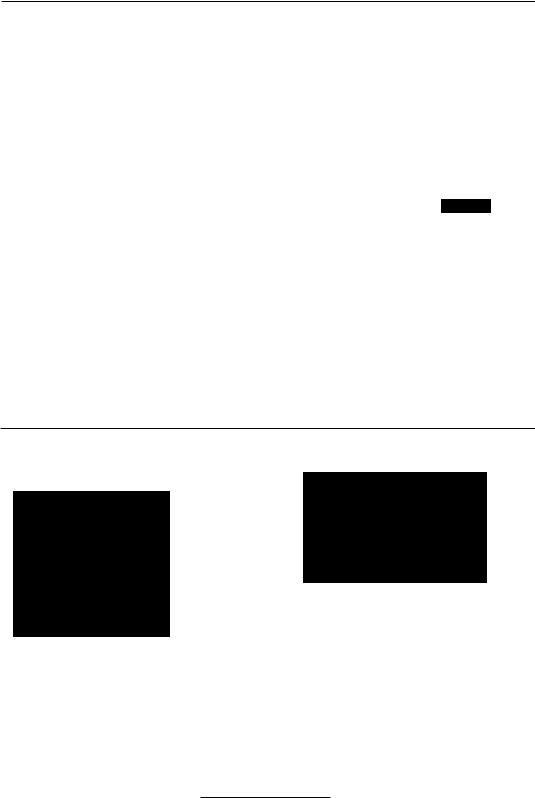
CFA Level 1 (2009) - 2
.pdf
Stud)' Session 4
CrossReference to CFA Institu te Assigned Reading # 17 - Output and Costs
Figure 8: Production Function for Sam's Shirts
Capita! (sewillg machilll's wl'dJ
Lahar (hours/day) |
|
2 |
3 |
4 |
5 |
6 |
|
|
|
|
|
|
|
|
|
40 |
6 |
9 |
12 |
14 |
l() |
17 |
|
4H |
H |
12 |
l() |
20 |
23 |
2') |
|
56 |
11 |
15 |
20 |
24 |
27 |
30 |
|
64 |
13 |
18 |
_.J |
27 |
31 |
34 |
|
|
|
|
|
7" |
|
|
|
80 |
15 |
20 |
2') |
30 |
34 |
37 |
|
R8 |
16 |
2J |
') - |
1 J |
.16 |
39 |
|
c./ |
.J_ |
||||||
|
|
|
|
|
|
|
|
The law of diminishing returns srares rhar ar some f)oinr, J.S more ,mel l110re oCone rno\lrcc' (e.g., labor) is added to the proelunion process. holding rl1l' Ljuanrin' of orher ill!)U(S CO!1Stanr. rhe ollrpur l'OIHinucs lO iIKrC;lSL:. bur ;l[ ;1 decre;lsins r;llc. For eX;ll11plc, iC;ln acrl' of corn needs to be picked, rhe ;lddition oja second and rhird worker is highh producrive. If vou alread~' have .700 workers in the field. rhe addirional ourpur from adding the 301 St worker is lower than rhar of' the second worker.
The IIIt1IgiIIaI prodlict OfCllpital is the increase in ourpur from using onl' additional unn
of capital. holding rhe qUJ.nrir!" of labor consranr. Diminishing marginal product of capiral refers to the fact rhat ar a constal1l level of labor. ourput increases as capital is added, bur at some poim, the increase in output from adding one more unit of capital begi ns to decrease.
Short-Run and Long-Run Costs
Short-run cosr curves apply to a plant of a given size. In the long run, everything is variable. including rechnolog)', plant size. and equipment. Long-run cosr curves arc known as planlling CIII"/!es. There is often a trade-off hetween the size of the firm and unit casrs in the long run.
Three reasons unit COSt mJ.y decline as OLItput or plam size increase arc:
I. Savings d [Ie to mass production.
2, Specialization of labor and machinery.
3. Experience.
The dovvnward sloping set:lllenr of the long-run average total cosr curve presenred in Figure c) indicates that economies of scale are presenr. In this range increasing rhe scale (size) of rhe firm results in lower average unit costs. The upward sloping segmenr of this long-run average total cost curve indicates that diseconomies of scale arc presenr when average unit cosrs rise as rhe scale of the business increases. The flat ponion of the longrun average roral cosrs curve in Figure 9 represenrs constant returns to scale. As shown, the firm's minimum efficient scale (rhe firm size rhar will minimize average unit cosrs) is one which will produce Q* unirs of ampul.
(G200R Kanlan Schwe.~er |
Pal!e 71 |

Study Session 4
Cross-Reference to CFA Institute Assigned Reading #17 - Output and Costs
Figure 9: Long-Run Average Total Cost
Average
Unit
Costs
economies of scale |
diseconomies of scale |
||
~ |
|
|
J |
constant returns |
LRATC |
||
|
to scale |
|
|
~ |
|
|
|
|
|
|
|
, |
Ulltpllt |
Q* = minimum efficient scale (firm size)
Diseconomies of scale may result as the increasing bureaucracy of larger firms leads w inefficiency, as well as from problems of motivating a larger work force. greater barriero to innovation and entrepreneurial activity, and increased principal-agent problems.
Page 72 |
(C)200fl. K:mbn Srhwp~pr |

Smdy Session 4
Cross-Reference to CFA Institute Assigned Reading #17 - Output and Costs
KEy CONCEPTS
LOS 17.a
The short run is the period in which quantities of some productive inputs are fixed and a firm cannot change its production methods or plant size. In the long run, a firm can adjust its inputs, production methods, and plant and equipment.
A firm's short-run decisions are easier ro reverse than its long~run decisions.
LOS 17.b
Total product of labor is the number of units of output produced for a given amount of labor inpuL
Marginal product of labor is the increase in the rotal product of labor from using one additional unit of labor. holding the quantities of other inputs fixed.
Average product of labor is (Otal producr of labor divided by the units of labor used.
Marginal product increases at first as more labor is added ro a fixed amount of capital assets (increasing marginal returns) but eventually decreases as more labor is added (diminishing marginal returns). The marginal product of labor curve intersects the average product of labor curve at its maximum.
LOS 17.c
Total cost is the sum of rotal fixed COSt (e.g. plant and equipment), which does not vary with output, and rotal variable cost (e.g., labor, raw materials), which increases as output is increased.
Marginal cost is the increase in rotal cost for a one unit increase in OutpUL
Average fixed cost (AFC) is fixed cost per unit of OutpUL Average variable cost (AVC) is variable cost per unit of OutpuL Average rotal cost (ATC) is rotal cost per unit of OutpuL ATC = AFC + AVe.
AFC slopes downward in the short run because fixed costs are consrant, but are averaged over an increasing quantity of OutpUL The vertical distance between the ATC and AVC curves is equal ro AFe.
The marginal cost curve intersects the AVC and ATC curves from below at their
. . .
mlOlmum POlOtS.
The AVC curve is U-shaped, declining at first due ro efficiency gains, but eventually increasing due ro diminishing returns. The ATC curve is U-shaped because it is the sum of the decreasing-ro-flat AFC curve and the U-shaped AVC curve.
©2008 Kaolan Schweser |
Page 73 |

Study Session 4
CrossReference to CFA Institute Assigned Reading # 17 - Output and Costs
LOS 17.d
A production function illustrates the relationship betwecn a firm's labor and capital inputs and its quanriry of outpUL
The law of diminishing returns srares thar, ar some point, using more of a variable inpur (holding other inpur quanrities constanr) incrcases ourpur at a dccreasing rate.
Diminishing marginal product of capital means thar for a consranr quanrity of labor.
Output increases ar a decreasing rare as more capital is employed.
Shorr-run cost curves are specific to a given planr size. Long-run average cosr curves show minimum average unir cosrs based on rhc oprimal plant size (scale of operarions) for each level of outpUL
Economics of scale are presenr whell unit costs fall as plam size increases. Diseconomies uf scalc arc prcseIH when cosrs rise as plant size increases, often arisins from rIlL' hllrcauualic inefficicncics that occur with br~n firms,
!'age 74

Study Session 4
Cross-Reference to CFA Institute Assigned Reading # 17 - Output and COSlS
CONCEPT CHECKERS
1.Which of the following most acctlrate~l' desctibes the relationship between
marginal product (MP) and average product (AP) of labor in the short run? As the quantity of output increases:
A.AP is always less than MP.
B.initially, AP < MP, then AP = MP, then AP > MP.
C. initially, AP > MP, then AP = MP, then AP < MP.
2.When marginal product is at a maximum:
A.marginal cost is at a minimum.
B.average product is at a minimum.
C.average variable cost is at J minimum.
\X'!Jcn average produCf is ,It a maximum:
A.marginJI COSI is ar a minimum.
H.marginal !)roduct i\ al :1 minimum.
|
C. average lariahk cosr i\ at a minimum. |
|
4. |
As a result of increasing labor from J 00 to 110 workers, outpur increased from |
|
|
1,250 to ] ,'iSO units per da\'. The marginal product of an additional worker is |
|
|
closesr to: |
|
|
A. 1.S5 units per da\'. |
|
|
B. |
.')0units per dav. |
|
e. |
300 units pCI' day. |
5.If both average product (AP) and marginal product (MP) are egual to 8 when 10 workers are employed, what can we most IikeL)' conclude about AP and MP when
15 workers are employed?
A.AP = MP = 5.
B.AP = 4 and MP = G.
C.AP = 7 and MP = 5.
6.Which of the following most acwrateL), describes the shapes of the average variable cost (AVe) curve and average total cost (ATC) curve?
A.The AVe curve and the ATC curve arc both U-shaped.
B.The AVe curve is U-shaped; the ATC curve declines initially then Aattens.
C.The AVC curve declines initially then Battens; the ATe curve is U-shaped.
7.The vertical distance between the average [Otal cost (ATC) curve and average variable cost (AVC) curve:
A.Increases as output lllcreases.
B.decreases as output increases.
|
C. |
. |
. |
|
remaIns constant as output IIlcreases, |
||
8. |
Which of the following most accurateL)' describes the shape of the average fixed |
||
|
cost curve? |
|
|
|
A. |
It becomes relatively flat at large output levels. |
|
|
B. |
It is always below the average variable cost curve. |
|
|
C. |
It intersects the marginal cost curve at its minimum. |
|
©2008 Kaplan Schweser |
Page 75 |

Study Session 4
Cross-Reference to CFA Institute Assigned Reading #17 - Output and Costs
9.Economies of scale:
A.are dependent on short-run average costs.
B.occur when average unit cOSts fall with larger firm size.
C.occur when the long-run average cost curve is sloping upward.
10.For a fixed level of capital, output increases as the quantity of labor increases, but at a decreasing rate. This phenomenon is most accurately described by the law of diminishing:
A.returns to labor.
B.returns to capital.
C.returns to technology.
Page 76 |
©2008 Kaplan Schweser |

Study Session 4
Cross-Reference (0 CFA Institute Assigned Reading # 17 - Ourput and Com
ANSWERS - CONCEPT CHECKERS
1.B MP inrersects the AP minimum from above. MP is initially greater than AP, and then MP and AP inrersec£. Beyond this inrersecrion, MP is Jess than AP (Hinr: draw the curves.)
2.A Marginal product is at a maximum when marginal COSt is at a minimum. At the corresponding labor and omput levels, average variable cost is decreasing and average product is increasing.
3.C When average product is at a maximum, average variable COSt is at a minimum. At the corresponding labor and output level, marginal product is decreasing and marginal cost IS increasing.
4.B Marginal product is the change in output divided by the change in input (labor). Since
output changed by 300 units and labor changed b\' 10 workers. the marginal product is 300/ !O = 30 unit, pcr da\',
.:;, |
C |
For most production processcs. as th, quamin' of labor increases. marginal producr is |
|
|
initially greater than average product. Then at some level of labor input, the two curves |
|
|
inrersec£. Bevond this inrersection, marginal product is less than average produc£. So, |
|
|
bel'ond AP = MP = 8, MP musr be less than AP |
(), |
A |
The AVC curve is U-shaped, declining at first due (0 efficiency, but evenrually increasing |
|
|
due (0 diminishing rewrns. The AFC curve decreases as outpUt increases, and eventually |
|
|
flanens our. The ATC is U-shaped because it is the sum of the decreasing-(O-flat AFC |
|
|
curve plus the U-shaped AVC curve. ATC = AFC ,. AVe. |
7.B The vertical distance between the average (Otal cost curve and average variable cost curve is average fixed cost, which decreases as outpur increases because more output is averaged over the same cos£.
8.A Average fixed cost initially declines rapidly, but as ourput increases it flattens out,
because fixed COSt is being averaged over more and more units of ompur.
9.B Economies of scale occur when the percenrage increase in output is greater than the percentage increase in cost of all inpurs. They occur when the long-run average COSt curve slopes downward.
10.A The law of diminishing returns states that at some poinr, as more and more of a resource (e.g., labor) is devoted (0 a production process, holding the quanrity of other inputs constant, the output increases, but at a decreasing rate.
©2008 Kaplan Schweser |
Page 77 |

The following is a review of the Economics principles designed to address the learning outcome statements set forth by CFA Insticute®. This topic is also covered in:
PERFECT COMPETITION
Study Session 5
EXAM Focus
You should be able (Q explain what a
price-taker market is and how price and output are determined in the short run and the long run. Pay special arrention (Q the relationship between marginal COSt, marginal revenue, price, and output for a perfectly competitive firm. Know how the:' concept of economic prahr applies to perfl'd corn pcci rion. fi n~dk \'()u should he
able (Q explain the adj ustmen ts that take
place in response (Q changes in industry demand. A good understanding of the case of perfect competition is important because this is the model of economically efficient markets (Q which we will compare other market structures in the revie\vs thar follow.
; .OS I B.a: Describ(~ lhe ch<lrauerisriu, (l( perfect competition, cxpia:n 'Vvil;' firm:; in a perfectly competitive markcl. ,U'C price takers, and ciifferenriate between market and firm demand curves.
Price takers are firms that face horizontal (perfectly elastic) demand curves. They can sell all of their output at the prevailing market price, but if they set their output price higher than the market price, they would sell nothing. They are price takers because they take the market price as given and do not have to devote any resources to discovering the best price at which (Q sell their product. A "price-taker market" is equivalent (Q a perfectly competitive market.
Perfect competition assumes the following:
•All the firms in the market produce identical products.
• |
There is a large number of independent firms. |
• |
Each seller is small relative to the size of the total market. |
•There are no barriers to entry or exi t.
Producer firms in perfect competition have no influence over market price. Market supply and demand determine price. As illustrated in Figure], t!J(' indiz/idualfirm:( demand schedule is p('J/ect~J' e!aJ"tlc (horizontal).
Page 78 |
©2008 Kaplan Schweser |

S[lldy Session 5
CrossReference to CFA Institute Assigned Reading # 18_Perfecr Competition
Figure I: PriceTaker Demand
Price
I
rl-----D
-------- Quantity
In a perfectly competitive market a firm will continue (0 expand production until marginal revenue, MR, equals marginal cosr. Me. Marginal revenue is the increase in (Otal revenue from selling one more unit of a good or service. For a price taker, marginal revenue is simply price because all additional units are assumed w be sold at the same (marker) price. In pllr( comptt;t;o!l, a firm's marginal revenue is equal lO the marker price
;111d ,1 firm', t\ f R nln't'prcsclHu. .l in FiF:url' 2. is idcIHiCJ,1 to it, dcm;llHJ curve. A [)I'o!lr- maximi7inf-: firm Ilill produce the quantity, Q'. whcl1 ~1(.'
Figure 2: Profit-Maximizing Output For A Price-Taker
I'ric,'
i |
|
]'IC |
|
Ibl: |
- |
I ' |
D = Marker Price = MR |
|
|
--~------------ |
QUOlmin |
Q' |
|
LOS 18.h: Determine the profit maximizing (loss minimizing) output for a perfectly competitive firm, and explain marginal cost, marginal revenue, and economic profit and loss,
All firms maximize (economic) profit by producing and selling the quantity for which marginal revenue equals marginal cosr. For a price taker in a perfectly competitive marker. this is the same as producing and selling the output for which marginal revenue equals (marker) price. Economic profit equals total revenues less the opportunity cost of production, which includes the cost of a normal return to all facwrs of production, inclucling invested capital.
Figure 3(a) illustrates that in the J!Jort run, economic profit is maximized when marginal revenue = marginal cost = price, or MR = Me = P. As shown in Figure 3(b), profit maximization also occurs when total revenue exceecls total cost by the maximum amount.
©2008 Kaplan Schweser |
Page 79 |

Study Session 5
Cross-Reference to CFA Institute Assigned Reading #18 - Perfect Competition
An economic loss occurs on any units for which marginal revenue is less than marginal cost. At any output above the quantity where MR = MC, the firm wiII be generating losses on its marginal production and will maximize profits by reducing output to where MR=Me.
Figure 3: Short-Run Profit Maximization
(a) Marginal Approach |
|
(b) Total Approach |
|||
|
|
Revenue |
|
|
|
|
|
(Costs) |
|
|
|
|
|
|
|
|
TC TR |
|
|
|
. |
|
|
|
|
|
|
|
R--:TCiS |
|
|
|
|
|
|
profit maximizing |
|
|
|
maximum |
|
|
//:)i |
||||
output |
i______.,::/ |
: |
profit maximizing |
||
ourpu t |
|||||
:./ |
|
; / |
' / |
||
(,II L!lI,:'\ |
I' |
'... |
|
||
|
|
|
Q |
|
|
Q |
|
|
|
||
In a perfectly competitive market. a firm will not earn economic profits for any significant period of time, The assumption is that new firms (with average and margnal cost curves identical to those of existing firms) wiII enter the industry to earn profits. increasing market supply and eventually reducing market price so that it JUSt equals .:. firm's average total cost (ATe), In equilibrium, each firm is producing the quantity L ,,. which P = MR = MC = ATe. so that no firm earns economic profits and each firm i~ producing the quantity for which ATC is a minimum (the quantity for which ATC :0 Me). This is illustrated in Figure 4,
Figure 4: Equilibrium in a Perfectly Competitive Market
Price Price and C>m
|
|
,', |
|
|
|
|
D |
I |
|
|
|
|
|
i |
|
|
|
|
|
/ |
|
|
|
|
|
I |
|
|
|
|
|
I |
|
|
|
|
|
/ |
|
|
|
P* |
|
P* |
|
f--------""-"...""----- MR |
|
|
|
|
|
//' |
|
|
|
|
|||
|
|
|
Quail lit)' --------- ' ------ Quantity |
||
|
Q* |
|
|||
|
|
|
|
Q* |
|
Figure 5 ilIustrates that firms wiII experience economic losses when price is below average total cost (P < ATC). In this case, the firm must decide whether to continue operating. A firm will minimize its losses in the short run by continuing to operate when P < ATC but P > AVe. As long as the firm is covering its variable costs and some of its
Page 80 |
©2008 Kaplan Schweser |
